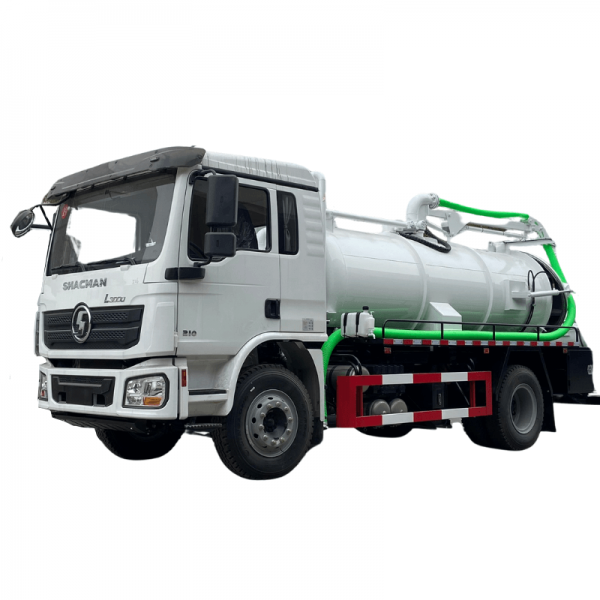Introduction
Vacuum trucks play a critical role in waste management, offering efficient solutions for the collection and transportation of various types of waste materials. From hazardous chemicals to non-hazardous industrial waste, these specialized vehicles are equipped to handle a wide range of materials. However, with the convenience and benefits that vacuum trucks provide comes the responsibility of ensuring compliance with waste disposal regulations. In this article, we will delve into the intricate world of vacuum truck waste disposal regulations, exploring the laws, guidelines, and best practices that govern the proper handling and disposal of waste materials.
Regulatory Framework for Vacuum Truck Waste Disposal
The regulations surrounding vacuum truck waste disposal are primarily governed by federal, state, and local laws designed to protect public health and the environment. At the federal level, several key regulations impact the waste disposal practices of vacuum truck operators. The Resource Conservation and Recovery Act (RCRA) is one of the most significant pieces of legislation in this regard. Enacted in 1976, the RCRA establishes a comprehensive framework for the management of hazardous waste from generation to final disposal. Vacuum truck operators handling hazardous waste must comply with the strict requirements outlined in the RCRA, including proper labeling, storage, transportation, and disposal of hazardous materials.
In addition to the RCRA, vacuum truck operators must also adhere to regulations set forth by the Environmental Protection Agency (EPA). The EPA's guidelines cover a broad spectrum of waste management practices, including the handling of hazardous and non-hazardous waste, spill prevention, and record-keeping requirements. By following the EPA's regulations, vacuum truck operators can ensure that their waste disposal practices align with federal standards and protect the environment.
At the state and local levels, regulations governing vacuum truck waste disposal may vary, adding an additional layer of complexity for operators working across different jurisdictions. State environmental agencies often have their own set of regulations that mirror or expand upon federal requirements. It is crucial for vacuum truck operators to familiarize themselves with the specific regulations in each state where they operate to avoid potential compliance issues.
Best Practices for Vacuum Truck Waste Disposal
In addition to regulatory requirements, there are several best practices that vacuum truck operators can implement to enhance their waste disposal processes and minimize environmental impact. https://www.heli-truck.com/isuzu-giga-4x2-15000-liters-water-tanker-truck/ of the key practices is proper waste characterization, which involves accurately identifying and categorizing the waste materials being collected. By understanding the composition of the waste, operators can determine the most appropriate disposal methods and ensure compliance with regulatory requirements.

Another important best practice is the use of proper containment and transportation measures to prevent spills and leaks during waste collection and transportation. Vacuum trucks should be equipped with secure storage tanks and leak-proof hoses to minimize the risk of environmental contamination. Regular maintenance and inspections of equipment are also essential to ensure that all components are functioning correctly and meet safety standards.
Furthermore, maintaining detailed records of waste collection and disposal activities is crucial for demonstrating compliance with regulations and tracking the final destination of waste materials. By keeping accurate records, vacuum truck operators can provide transparency and accountability in their waste disposal practices.
Emerging Trends and Technologies in Vacuum Truck Waste Disposal
As technology continues to advance, new trends and innovations are shaping the future of vacuum truck waste disposal. One significant trend is the increasing adoption of sustainable waste management practices, such as recycling and resource recovery. Vacuum truck operators are exploring ways to extract valuable resources from waste materials, reducing the volume of waste sent to landfills and promoting a more circular economy.
Additionally, the integration of digital tools and software solutions is streamlining waste disposal processes and enhancing operational efficiency for vacuum truck operators. Advanced tracking systems and data analytics tools enable operators to monitor waste collection activities in real-time, optimize route planning, and generate reports for regulatory compliance purposes.
Furthermore, the development of alternative fuel technologies is revolutionizing the environmental footprint of vacuum trucks. Electric and hybrid-powered vacuum trucks are becoming more prevalent, offering a cleaner and more sustainable alternative to traditional diesel-powered vehicles. By reducing emissions and minimizing environmental impact, these innovative technologies are reshaping the waste management industry.
Conclusion
In conclusion, navigating vacuum truck waste disposal regulations requires a comprehensive understanding of federal, state, and local laws, as well as adherence to best practices and emerging trends in the industry. By following regulatory requirements, implementing best practices, and embracing technological advancements, vacuum truck operators can ensure the safe and environmentally responsible disposal of waste materials. As the waste management landscape continues to evolve, staying informed and proactive in compliance efforts is essential for maintaining operational excellence and protecting the environment for future generations.
